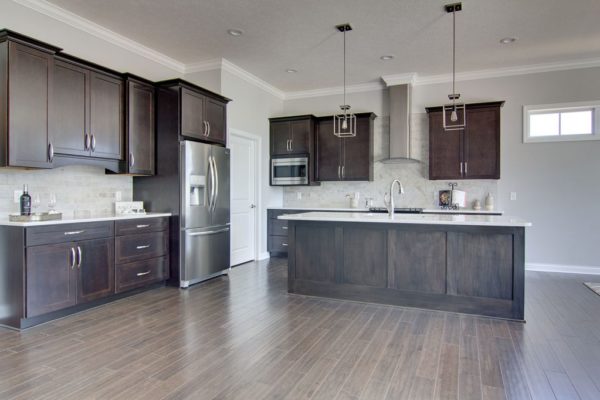Why universal home design is more crucial now than ever before
January 31, 2020 6:20 pm
Imagine navigating a staircase with crutches…
The ability to move freely around our own home — we often take it for granted, but for a growing number of Americans, traditional home design can hold them back from real independence. Universal Home Design is the home building approach that can provide freedom of movement to those who require it.
We all have an elderly relative who faces some difficulty moving around their home with the same dexterity they once did. But many seniors are further immobilized – 35% of the almost 50 million people in the U.S. over 65 suffer from some form of disability.
Did you know that seven million people rely on some form of mobility device, such as canes, crutches, or walkers. Causes can range from neuromuscular diseases to simply falling and breaking a leg.
These are only some of the factors that make in-home mobility a challenge for so many people. And as America’s aging and disabled populations are on the rise, these challenges will only become more widespread.

The answer? Universal home design: a home designed for everyone
Universal home design is an approach to building, designing, and laying out a home that makes it accessible to anyone, regardless of age or ability.
Whether a teenager who broke her leg at soccer practice or an elderly gentleman with a neuromuscular disorder, it’s about space that allows for mobility. Common examples of universal home design principles in action include things like zero-step entries, single floor layouts, wider doorways to accommodate wheelchairs, staggered countertop heights so one can cook regardless of whether standing or sitting, doors that slide open instead of swinging out and hitting a person using a mobility device, and many others.
If no one in your immediate family has mobility restrictions, universal home design might seem unnecessary. But here are a few reasons why you might want to consider this approach:
- Medical challenges can arise at any time. From freak accidents to diagnosed conditions, circumstances change and the chance that you will one day have a family member requiring special mobility accommodations will only go up.
- Because the initial cost of universal home design is cheaper than expensive remodeling projects, you’ll likely save money by preparing for the possible rather than waiting until something happens.
- Your home will be accessible to any family or friends who are or become mobility-challenged in the future.
- Universal home design adds value to your home, making it more attractive to a wider audience of potential buyers should you ever decide to sell.
To learn more about the benefits of universal home design, click here or email us at jeffreabldr@att.net, or call 330-806-6122.
[1] Over-65 and disabled population: U.S. Census Bureau; https://www.census.gov/library/stories/2018/10/snapshot-fast-growing-us-older-population.html
[1] Number of people relying on mobility devices: MDA (Muscular Dystrophy Association); https://www.mda.org/quest/article/canes-crutches-and-walkers
Tags: Intro to Universal Homes, Universal Home DesignCategorized in: Universal Home Design
This post was written by Rea Custom Homes

